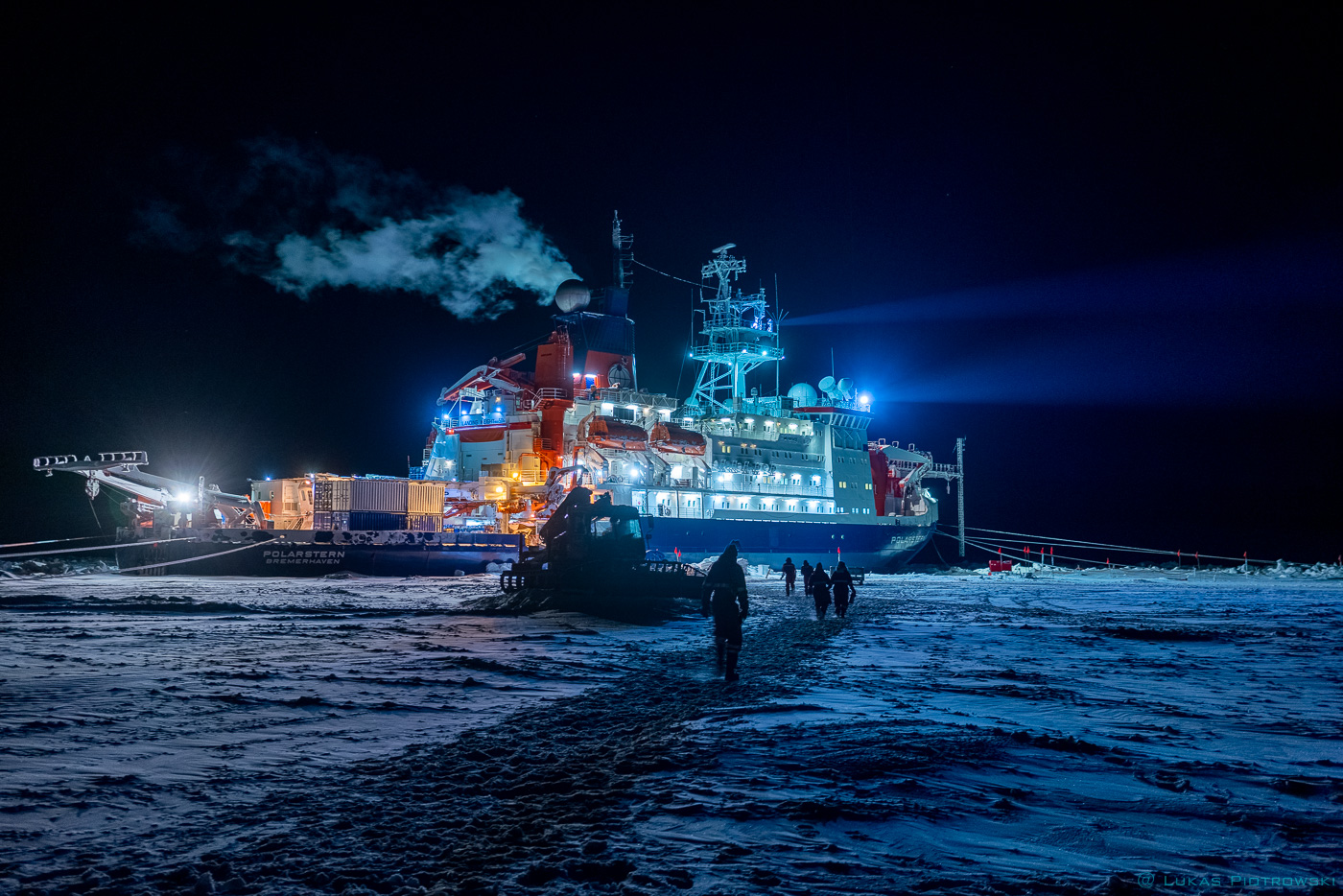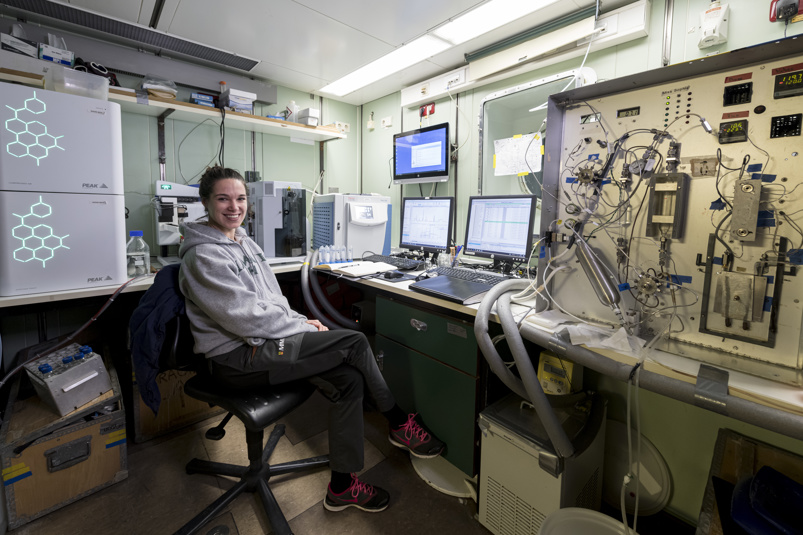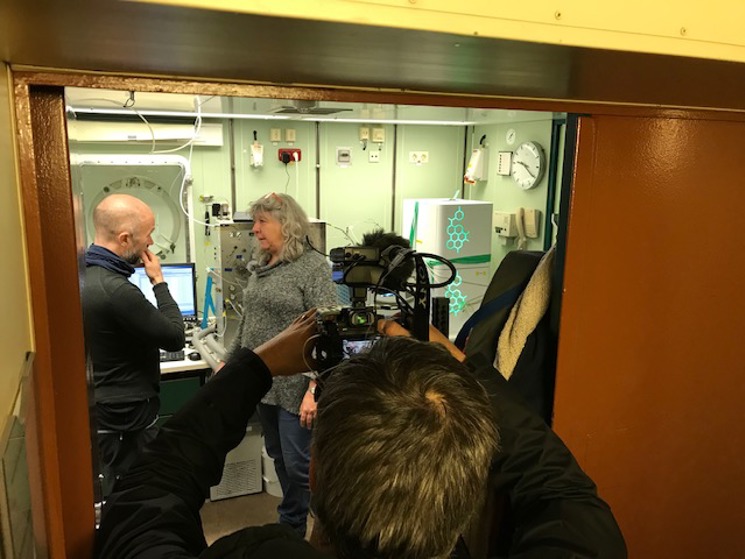Precision Nitrogen Trace Travels to the North Pole
The University of Gothenburg is a multidisciplinary university that dates back to 1891 consisting of eight faculties and 38 departments. The university has a large number of research and centers of expertise that span across several academic disciplines. These disciplines serve as a meeting point for students, researchers and representatives from the commercial, industrial, and public sectors.

A team of researchers from the University of Gothenburg, Katarina Abrahamsson, Patric Simoes Pereira and Adela Dumitrascu, embarked on an expedition to the North Pole in 2019 and they took their Precision Nitrogen Trace along for the journey.
We spoke with Adela Dumitrascu, a Research Engineer at the University of Gothenburg, to find out more about their work and why the Precision Nitrogen Trace was their generator of choice for the expedition.
Typically what is the focus of your GC analysis - what sort of applications?
We are trying to detect trace gases and halocarbons, mainly in ice cores taken during different polar expeditions. Of course we analyze seawater, snow and air samples as well.
What PEAK Scientific generators do you have in your laboratory and what GC instruments do they supply?
We use the Precision Nitrogen Trace Generators which supply our Thermo Scientific Trace 1310 GCs.
Is your generator used for carrier gas, detector gas or both?
Our generators are used for both carrier and detector gas.
Are you using a GC method for your analysis? If yes, which method?
We developed our own in-house GC method which is suitable for our applications.
What prompted you to choose a PEAK generator for GC and how long have you used it?
We were packing for a one year expedition to the North Pole in 2019, planning to have two GCs to analyze ice cores, water and air samples onboard. We run our instruments 24/7 so having gas cylinders supplies onboard for one year was an issue - not only logistically, but also due to the unknown amount of samples that we could be analyzing during that year. This made budgeting for the gas very hard to estimate.
Having gas cylinders onboard a vessel requires a lot of space, plus accounting for the issues around logistics of the cylinders - placement onboard and leaks through the system. Usually the gas cylinders are located outside the labs onboard the vessels, but changing cylinders at -50°C during the polar winter is not fun at all!
I started to look for other options and found the gas generators from PEAK. The added benefit of this is that they offered us a fast delivery just in time for the expedition starting. These "babies" are small and efficient and worked continuously without an issue for the duration of the expedition! I can't express how happy we still are making that decision to switch to gas generators! We have been using the generators since September 2019 and next year we are going to have these "babies" with us in Antarctica.
Switching to gas generators was the best decision ever!
 Adela Dumitrascu in the lab with both Precision Nitrogen Trace gas generators
Adela Dumitrascu in the lab with both Precision Nitrogen Trace gas generators
What has been the key benefit of deploying PEAK generators for GC as opposed to your previous gas supply solution?
They are small in size, easy to operate and they generate gas on-demand without the hassle of changing to different gas cylinders. It's a great investment when you use a lot of gas for analysis.
How would you describe your PEAK generator purchasing experience in terms of speed of response, ease of ordering, catering for your needs and timing of delivery?
Like I mentioned above, we got a quote immediately after our inquiry and the delivery was really fast as well. Looking back through the emails, it took 20 days from quote to delivery.
Have you ever had a site visit from a PEAK engineer in relation to your generator for GC, if so, could you describe your experience of this support?
Yes, we purchased the yearly tech support/maintenance for our generators and for the last two years everything went very smoothly. Basically, PEAK contacts us to book a day for the maintenance, the PEAK engineer comes and efficiently services the generators while also answering all possible questions we might have.
Would you recommend PEAK Scientific generators to other laboratories? If yes, what would be your main reason for the recommendation?
I highly recommend the PEAK generators, mainly for the ease of use and removing all the hassle surrounding handling gas cylinders.
A PEAK gas generator comes with a range of benefits, many of which have been mentioned above. While these are extremely helpful when put into the perspective of the polar expedition Adela’s team embarked on – these benefits are also important to brick and mortar labs.
The Precision Nitrogen Trace was designed to provide a constant and consistent source of nitrogen for carrier and detector gas. Designed to be compact and stackable, the Precision range is a small, space-saving solution for any size of lab.

By moving away from cylinders to provide the necessary hydrogen, Adela’s team had a reliable source of hydrogen for their entire expedition. By removing the need for gas cylinders, the team removed the risk of disruption to their analysis due to cylinders running out of gas.
With a nitrogen gas generator they were also able to maximize uptime because they had no need for switching cylinders, meaning they were able to run their instruments 24/7 with the peace of mind that the gas supply would not run out.
Precision Nitrogen Trace
The Precision Nitrogen Trace generators are capable of delivering ultra-high purity nitrogen, removing oxygen and moisture via Pressure Swing Adsorption technology, as well as removing hydrocarbons by means of catalytic oxidation to ensure maximum purity output.
As with all Precision Series generators, Nitrogen Trace models benefit from a compact and modular, stackable design, minimizing the total footprint required for GC gas supply, and providing flexibility to add or remove modules as your laboratory requirements evolve over time.
